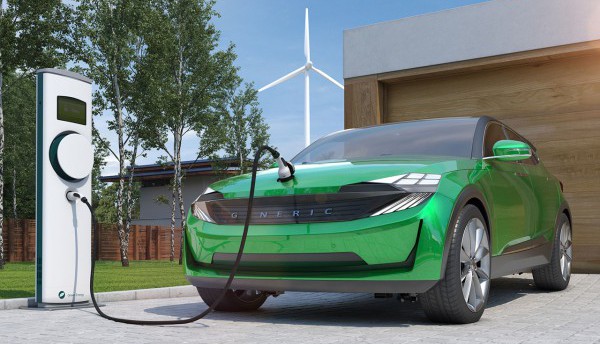
Q&A with Driivz, a Vontier company
A smart grid is an advanced electrical system that uses digital technology to improve the reliability, efficiency and sustainability of electricity distribution. By incorporating information and communication technologies, smart grids allow for real-time monitoring and management of energy flow. This capability is especially important as the number of electric vehicles on the road continues to grow, putting extra pressure on traditional power systems.
Charging stations for EVs are vital parts of the smart grid. They help manage energy use by optimizing when and how vehicles are charged, which can reduce peak demand and support the use of renewable energy sources like solar and wind. Smart charging solutions can adjust power distribution based on current grid conditions and user needs, ensuring that charging happens during off-peak hours or when renewable energy is plentiful.
Smart grids also enable Vehicle-to-Grid (V2G) technology, allowing EVs to send stored energy back to the grid. This feature enhances grid stability and offers new revenue opportunities for EV owners. Overall, smart grids create a more responsive and interconnected energy system, playing a key role in promoting sustainable transportation and reducing carbon emissions.
To learn more, we spoke with Andy Bennett, CEO of Driivz, a Vontier company.

The following is an edited transcript of the conversation:
S&P Global Mobility: How does Vontier's technology interface with smart grid systems? What specific protocols and technologies do you use to ensure efficient energy management and load balancing at charging stations?
Andy Bennett: Vontier’s technology interfaces with smart grid systems through its Driivz platform, which optimizes EV charging to reduce grid strain, manage energy use and integrate renewables. The Driivz platform uses intelligent algorithms for dynamic load balancing, ensuring reliable EV charging without compromising power delivery to other facilities.
We use industry-standard protocols like OCPP (Open Charge Point Protocol) for charger-network communication and support real-time data exchange with utilities for demand response and peak shaving. Our cloud-based architecture enables seamless integration with grid management systems, as well as real-time monitoring, remote control and secure payment processing.
What technologies do you use for real-time monitoring and diagnostics of charging stations? How do these systems contribute to predictive maintenance and reduce downtime?
Vontier leverages advanced Driivz technology for real-time monitoring and diagnostics of charging stations. Our intuitive dashboard provides 24/7 visibility across the network, while the integrated Alert Management System (AMS) delivers instant notifications of anomalies or faults. Automated fault detection and self-healing algorithms resolve over 80% of charger issues remotely, significantly reducing the need for on-site technician visits and minimizing downtime.
These real-time systems enable predictive maintenance by continuously analyzing performance data to identify potential failures before they occur. As a result, operators benefit from increased charger uptime, lower maintenance costs and improved network reliability. Additionally, dynamic load balancing and peak shaving maximize site capacity, allowing up to 6X more chargers per location with existing infrastructure, further optimizing operational efficiency and total cost of ownership.
How do you implement dynamic load management in your charging solutions? What algorithms or methodologies are used to optimize power distribution among multiple charging stations in high-demand scenarios?
Vontier’s Driivz platform implements dynamic load management by continuously monitoring site-wide energy usage and automatically adjusting power distribution among charging stations in real time. Our intelligent algorithms factor in unmanaged loads (like HVAC or appliances) and prioritize charging based on customizable criteria such as vehicle type, user profile or charging urgency.
The system uses real-time data and predictive analytics to balance loads, prevent grid overloads and maximize the number of vehicles that can be charged simultaneously, even during peak demand. This ensures optimal utilization of available power, grid stability and a seamless charging experience for all users.
What role do you see for V2G technology in the future of EV charging? What technical challenges do you face in implementing V2G systems, particularly in terms of bi-directional energy flow and communication protocols?
We see V2G technology as a key driver in the future of EV charging, enabling greater grid stability, enhanced renewable energy integration and new revenue opportunities for EV owners and charge point operators through bi-directional energy flow. V2G allows utilities to balance supply and demand more efficiently, while consumers and charge point operators benefit from backup power and the ability to monetize stored energy.
However, implementing V2G presents technical challenges, particularly around managing bi-directional energy flow, ensuring robust cybersecurity, and supporting advanced communication protocols between vehicles, chargers and the grid. Our Driivz platform addresses these challenges with intelligent energy management software that orchestrates seamless, secure and standards-compliant V2G operations, ensuring reliability and scalability as V2G adoption grows.
How does Vontier plan to incorporate renewable energy sources into its charging solutions? What technical challenges do you anticipate in managing energy supply variability from sources like solar and wind?
Our smart EV charging and energy management solutions allow for the integration of renewable energy sources, allowing for more efficient energy use and resulting in even greater cost savings. As we continue to move forward with smart technologies that allow greater integration with renewables, fewer charge points are required to rely on the grid at all. For example, solar panels installed on the charging stations’ property can be used to charge the sites’ local storage batteries, allowing EVs to be charged without adding additional demand to the grid. The energy stored in the batteries can also relieve strain on the power infrastructure during peak demand periods.
Smart EV charging is key to addressing the technical challenges that come along with managing energy supply variability from sources like wind and solar. For example, smart charging systems can automatically modify charging rates and schedules depending on real-time power price and availability, resulting in cheaper costs and more effective energy consumption.